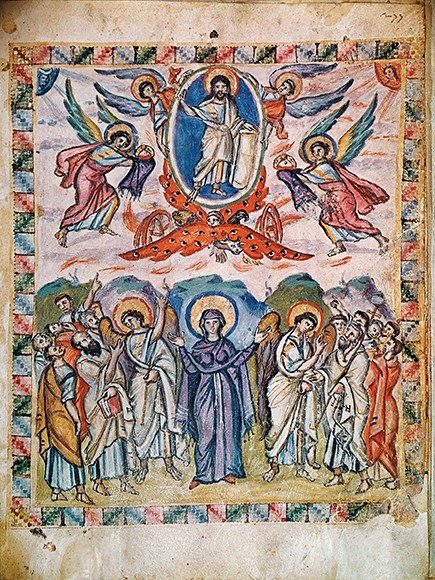Ascension, miniature depicted in the Syriac Evangeliary of Rabbula (Biblioteca Medicea Laurenziana, Florence, Italy)

The image of the ascension in the illustrated Rabbula Syriac Gospels is one of the earliest depictions of the scene on parchment (586 CE) and sets the iconography for centuries to come. The figure of Christ is positioned in a mandorla (almond-shaped frame) with his right hand in a blessing gesture and his left holding a scroll. Flanked by angels, he is bearded and wears a golden nimbus. There is a clear distinction between this heavenly realm and those figures who remain on earth. Center stage in the earthly realm belongs to Mary, who stands directly beneath the mandorla of Christ. Her hands are open in exaltation and direct the viewer to the angels standing beside her. While Mary is not explicitly mentioned by Luke as being present at the ascension, she is introduced immediately thereafter (Acts 1:14). Her growing importance in the theological tradition had been signaled by her designation as Theotokos, “Mother of God,” at the Synod of Ephesus in 431, and she becomes more prominent in both literary and visual presentations.




